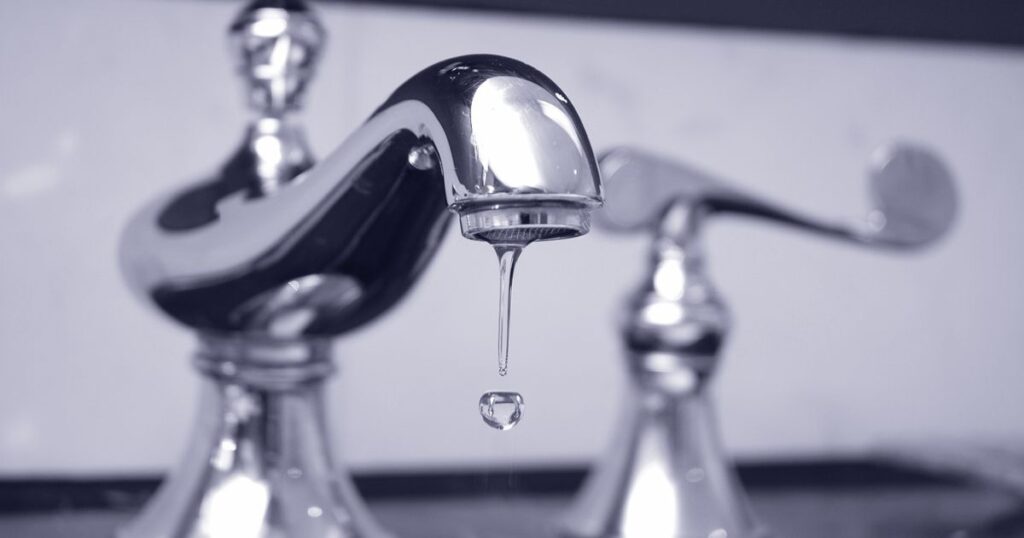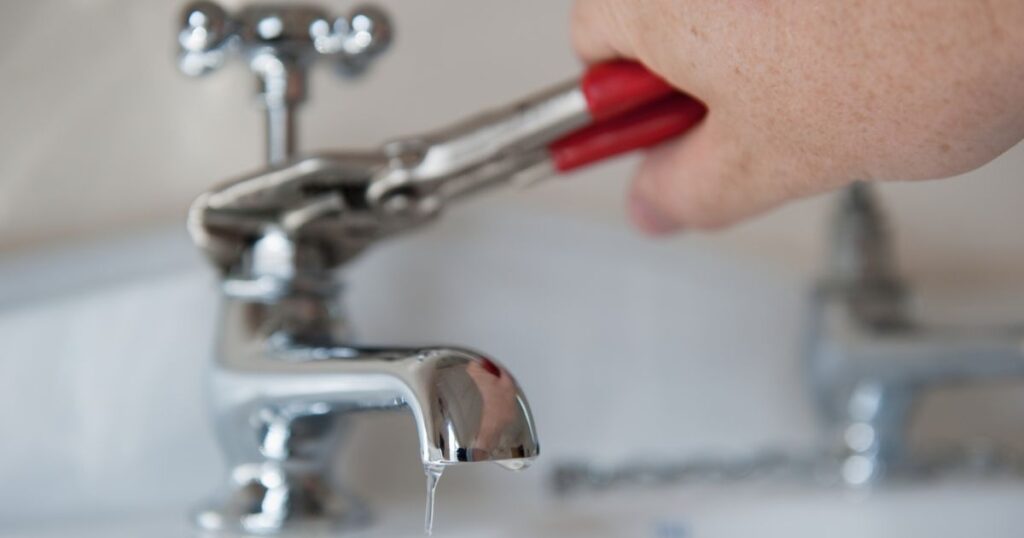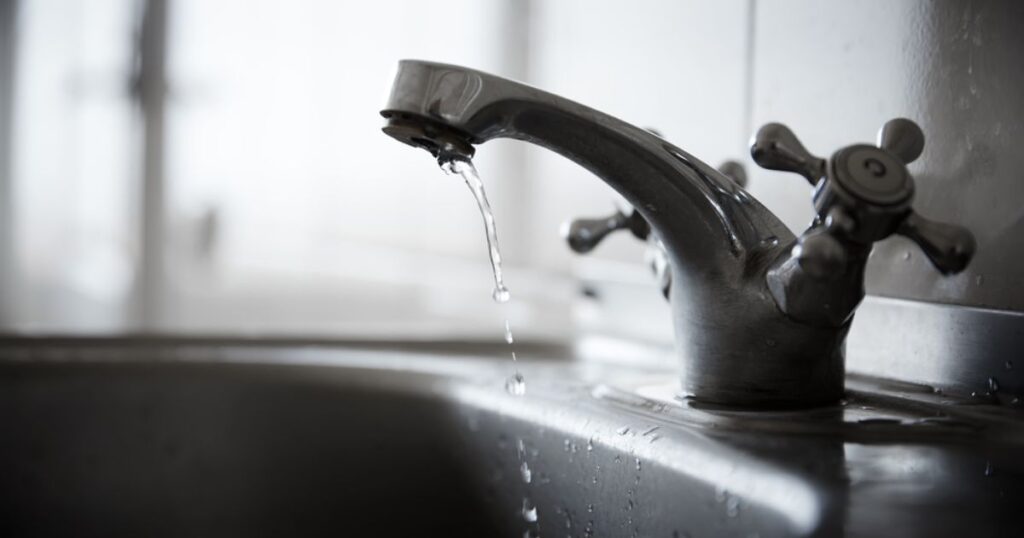Introduction:
A functional bathroom faucet is essential for any home, providing access to clean water for various purposes. However, dealing with a leaky faucet can be frustrating and wasteful. In this comprehensive guide, we will delve into the common causes of faucet leaks and provide step-by-step instructions on how to fix them.
Whether you’re experiencing a faucet leaking at the base, a dripping faucet, or any other type of leak, this guide is tailored to help UK/USA homeowners resolve the issue efficiently.
5 Causes of Leaky Faucets

1. A Damaged Cartridge:
A damaged cartridge is a common culprit behind leaky faucets, especially in single-handle faucets. The cartridge is responsible for controlling the flow of water, and when it becomes damaged or worn out, it can lead to leaks. Signs of a damaged cartridge include inconsistent water flow, leaks around the handle, or difficulty turning the handle.
To fix a leaky faucet caused by a damaged cartridge, you’ll need to replace the cartridge. Begin by turning off the water supply to the faucet. Next, disassemble the faucet handles to access the cartridge. Remove the old cartridge and replace it with a new one. Be sure to choose a cartridge that matches the specifications of your faucet model.
2. Broken Washers:
Washers play a crucial role in creating a watertight seal within the faucet. Over time, washers can become worn out or damaged, resulting in leaks. Signs of broken washers include constant dripping from the faucet spout, even when the faucet is turned off.
To repair a leaky faucet caused by broken washers, replace the washers. Start by turning off the water supply and disassembling the faucet handles to access the washers. Remove the old washers and replace them with new ones of the appropriate size and type. Ensure that the new washers are appropriately seated to create a tight seal.
3. Water Pressure:
High water pressure can strain faucet components excessively, leading to leaks over time. Conversely, low water pressure can also contribute to leaks by causing the faucet to work harder than necessary. Monitoring and maintaining optimal water pressure is crucial for preventing faucet leaks.
To address water pressure-related leaks, adjust the water pressure at the source. You can change the pressure regulator on your home’s main water line. Consult a professional plumber if you need help adjusting water pressure safely.
4. Malfunctioning O-Ring:
O-rings are small rubber gaskets that create a seal between the faucet components. If an O-ring becomes worn out or damaged, it can leak around the base of the faucet. Signs of a malfunctioning O-ring include water pooling around the faucet base or a constant drip.
To fix a leaky faucet caused by a malfunctioning O-ring, replace the O-ring. Start by turning off the water supply and disassembling the faucet handles to access the O-ring. Remove the old O-ring and replace it with a new one of the appropriate size and type.
5. Deteriorated Valve Seat:
The valve seat is the connection point between the faucet and the spout. Over time, the valve seat can deteriorate due to mineral buildup or corrosion, resulting in leaks. Signs of a deteriorated valve seat include water leaks around the base of the faucet or irregular water flow.
You’ll need to smooth out or replace the valve seat to repair a leaky faucet caused by a deteriorated valve seat. Start by turning off the water supply and disassembling the faucet handles to access the valve seat. Use a flashlight to inspect the valve seat for signs of deterioration. If it’s rusted or damaged, use a valve seat wrench to smooth it out or replace it with a new one.
What You’ll Need to Fix the Leaky Faucet
Gathering all the necessary tools and materials before you begin repairing your leaky faucet is essential. Here’s what you’ll need:
- Replacement Parts: Depending on the cause of the leak, you may need to purchase replacement parts such as cartridges, washers, O-rings, or valve seats.
- Adjustable Wrench: For loosening and tightening nuts and bolts.
- Phillips Screwdriver: For removing screws from the faucet handles.
- Flathead Screwdriver: This is for prying off faucet handles or other components.
- Plumber’s Tape: This creates a watertight seal on threaded connections.
- Flashlight: For inspecting hard-to-reach areas within the faucet.
- Cleaning Supplies: To clean any mineral buildup or debris from faucet components.
- Bucket: To catch any water that may spill during the repair process.
Ensure you have all the necessary tools and materials before you repair your leaky faucet.
How to Fix a Leaky Bath Faucet

Step 1: Turn Off the Water:
Before you begin any repair work, turning off the water supply to the faucet is crucial. Locate the shut-off valves under the sink or at the main water supply for your home. Turn the valves clockwise until fully closed to cut off the water supply to the faucet.
Step 2: Disassemble the Faucet Handles:
Using a Phillips screwdriver, remove the screws that hold the faucet handles in place. Once the screws are removed, carefully lift off the handles to expose the internal components of the faucet.
Step 3: Detach the Valve Stem:
With the handles removed, you’ll have access to the valve stem. Use an adjustable wrench to unscrew the valve stem from the faucet body. Once unscrewed, carefully remove the valve stem and set it aside.
Step 4: Inspect and Replace the Damaged Parts:
Inspect the internal components of the faucet, including the cartridge, washers, O-rings, and valve seat. Look for any signs of damage, wear, or corrosion. Replace any damaged parts with new ones of the appropriate size and type.
Step 5: Turn On the Water:
Once you’ve replaced any damaged parts, it’s time to turn the water supply back on. Slowly open the shut-off valves under the sink or at the main water supply to restore water flow to the faucet. Test the faucet for leaks by turning it on and off several times.
Read More Posts
How To Remove A Bathroom Sink Stopper?
How To Replace A Bathroom Faucet? A Comprehensive DIY Guide
FAQs
How do I get my bathroom faucet to stop dripping?
Identify the source of the drip, such as worn-out washers or O-rings, and replace them. Turn off the water supply before starting.
Can you fix a leaky faucet yourself?
Yes, you can fix most leaky faucets with essential tools and knowledge. Identify the problem, gather the necessary replacement parts, and follow step-by-step instructions.
Why is my faucet dripping after I turn off the water?
Persistent dripping post-water shut-off may indicate worn-out components like a faulty valve or damaged seals. Investigate and replace these parts to resolve the issue.
How to fix a leaky bathroom sink faucet with a single handle?
Start by turning off the water supply. Disassemble the faucet, inspect the cartridge or O-ring for damage, and replace it as needed. Reassemble and test for leaks.
Conclusion
Dealing with a leaky bathroom faucet can be a frustrating experience, but with the proper knowledge and tools, it’s a problem that can be quickly resolved. By identifying the root cause of the leak and following the step-by-step instructions provided in this guide, UK/USA homeowners can effectively repair their leaky faucets and prevent further damage.
Remember to maintain your faucets regularly to keep them in optimal condition and address any leaks promptly to conserve water and avoid potential water damage. If you encounter any difficulties during the repair process, don’t hesitate to seek assistance from a professional plumber. With a little effort and know-how, you can enjoy a leak-free bathroom faucet again.







